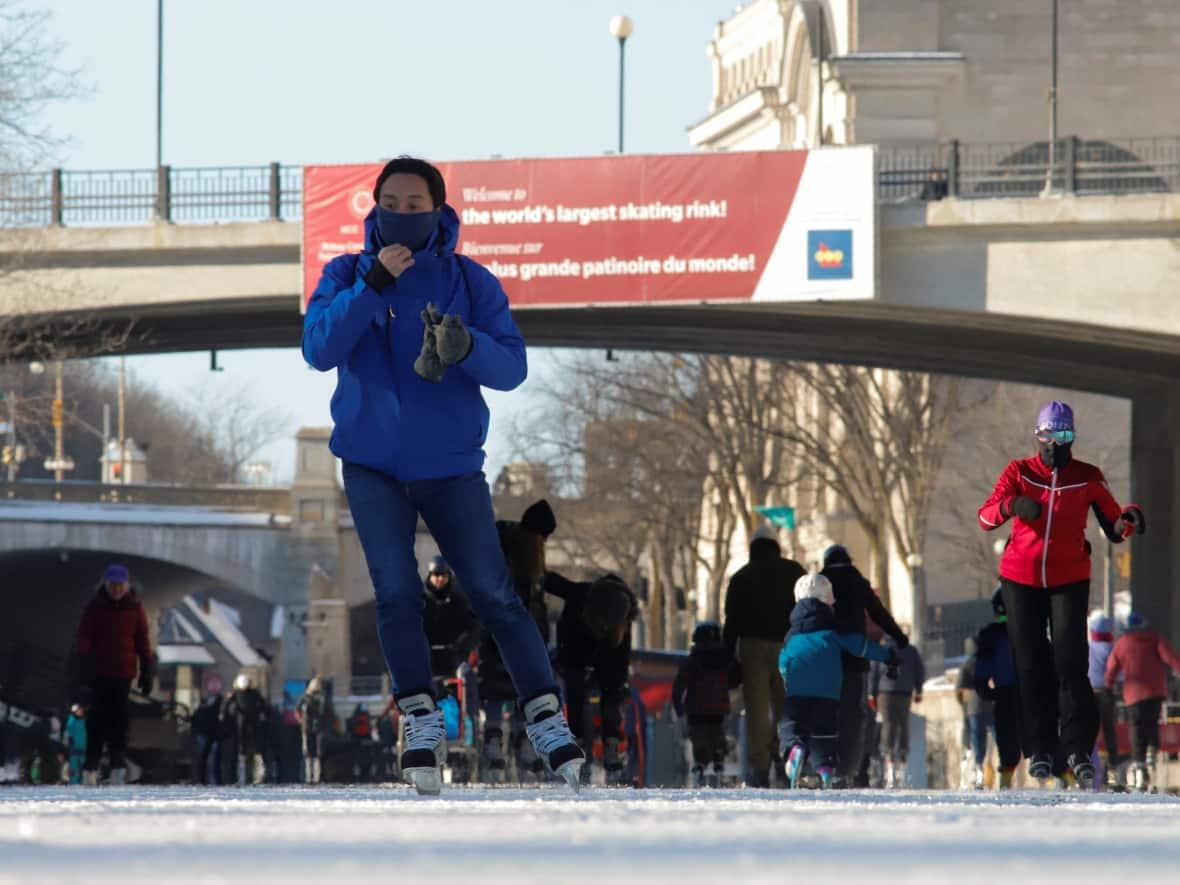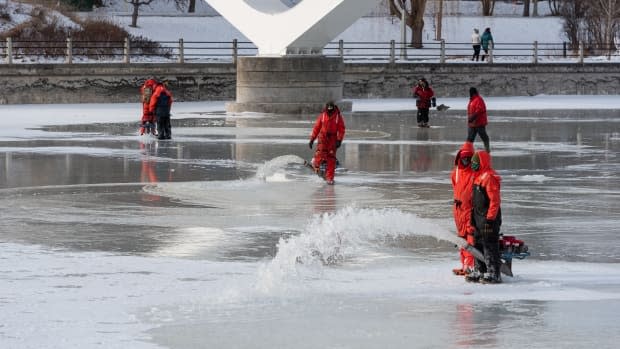Slush cannons, ice probes among ideas to extend Rideau Canal skating season

The National Capital Commission (NCC) wants to find ways to open the Rideau Canal Skateway earlier in the season and will be working with Carleton University to try out some ideas — including something called a "slush cannon."
The NCC has been working for years to figure out how climate change affects attractions like the canal so that it can better manage them.
A 2020 report said one of the problems of warmer, wetter winters is a shortened Rideau Canal skating season. Seven of the last 10 skating seasons have been shorter than the average of 59 days.

In its news release on this year's opening, the NCC said it concluded it would be more effective to try moving up the start date of the skating season, which in recent years has happened in mid-to-late January, than trying to extend its end.
The collaboration between the NCC and Carleton is set to run for four years. This year, the team is gathering baseline data about the canal conditions to inform future pilot projects that could give skaters more time on the ice.
Shawn Kenny, a professor of environmental engineering at the university, says they'll look at ice temperature and use ground-penetrating radar to measure ice thickness.
The temperature sensors were only installed this week, dropped into holes drilled in the ice. The probes will take temperature readings from the mud at the bottom of the canal, the water and the ice, he said.
Kenny said the team will look at several factors unique to the skateway. One is the effect of run-off water and effluent from road bridges over the canal, while another is the fact the canal isn't the same depth along its whole length.
He said he could imagine tweaking how the canal is insulated, flooded or cleared of snow, but subzero temperatures will still be key as he doesn't think refrigeration is viable — financially or environmentally.

Ideas discussed at Thursday's meeting
One way to extend the life of the skateway would be to promote thicker ice earlier — and that's where "slush cannons" could come in.
Similar to snow cannons used on ski hills, they would spew very cold water or even slush onto the ice, according to Bruce Devine, a senior manager with the NCC.
"Just imagine: if the water is cold enough to start building some ice, and we can build it [so that] even if the temperature rises we don't lose the ice, then we can achieve our 30-centimetre thickness possibly sooner," Devine told CBC's Ottawa Morning.
The idea was discussed at a Thursday NCC meeting, where CEO Tobi Nussbaum also mentioned playing around with the canal's water depths.
The team intends to study if deeper water affects the freezing or melting speeds of the ice.
The NCC also recently partnered with civil engineering students from the University of Ottawa to tackle a problem spot near the canal's northern end that doesn't want to fully freeze over.
Nussbaum said there should be an update in April on the NCC's wider work on climate change, and particularly the agency's vulnerabilities.


